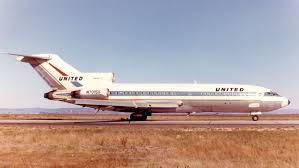The Future of Flights in Canada: Trends and Insights

Introduction: The Importance of Air Travel
Air travel plays a crucial role in connecting people across vast distances, promoting tourism, and enabling the efficient movement of goods. With the world gradually recovering from the pandemic, the landscape of flights is transforming, particularly in Canada. Understanding current trends, operational changes, and future forecasts is vital for travelers and industry stakeholders alike.
Current Trends in Air Travel
According to Statistics Canada, air passenger traffic experienced a significant rebound in 2023, projecting a growth of 40% compared to the previous year. Major airports like Toronto Pearson and Vancouver International report rising volumes, revealing a surge in domestic and international travel. The uptick in demand has prompted airlines to increase flight frequencies and reduce fares, providing travelers with more options.
One notable trend is the shift towards sustainable aviation. Airlines are under increasing pressure to reduce their carbon footprint, with many implementing eco-friendly initiatives, such as investing in newer, fuel-efficient aircraft and exploring sustainable aviation fuels. Air Canada recently announced plans to achieve net-zero greenhouse gas emissions by 2050, exemplifying the industry’s commitment to environmental responsibility.
Impact of Travel Restrictions and Regulations
As travel restrictions continue to evolve, air travel regulations are becoming more stringent. Following the COVID-19 pandemic, many countries have implemented updated health protocols. Travelers flying to and from Canada must adhere to specific vaccination and testing requirements, which can affect flight schedules and passenger volumes. The Government of Canada periodically updates these measures, emphasizing vaccination as a primary tool to combat potential outbreaks.
Future Projections for Flights
Looking forward, industry analysts predict that the air travel sector will stabilize but remain highly competitive. Experts foresee a potential integration of technology in air travel, with advancements in artificial intelligence improving operational efficiency and customer service. Additionally, travel demand is expected to evolve, with an increased interest in remote working and digital nomadism potentially reshaping flight patterns.
Conclusion: Significance for Travelers and Airlines
In conclusion, the evolving nature of flights in Canada presents both challenges and opportunities. As airlines adopt more sustainable practices and adapt to new regulations, travelers can benefit from improved services and heightened safety measures. Awareness of these trends can empower travelers to make informed decisions while flying in a dynamically changing landscape. As we move forward, the future of air travel in Canada looks promising, with expectations of growth and innovation on the horizon.





